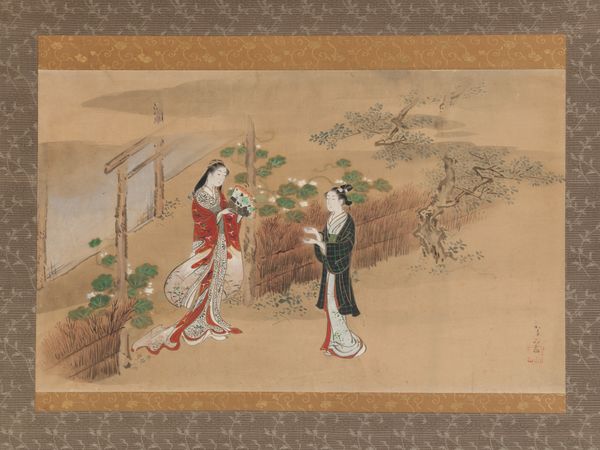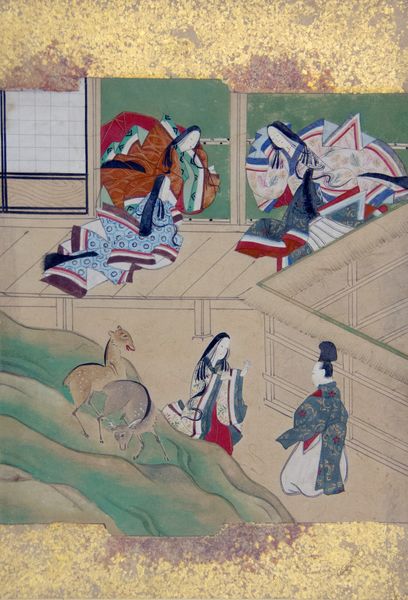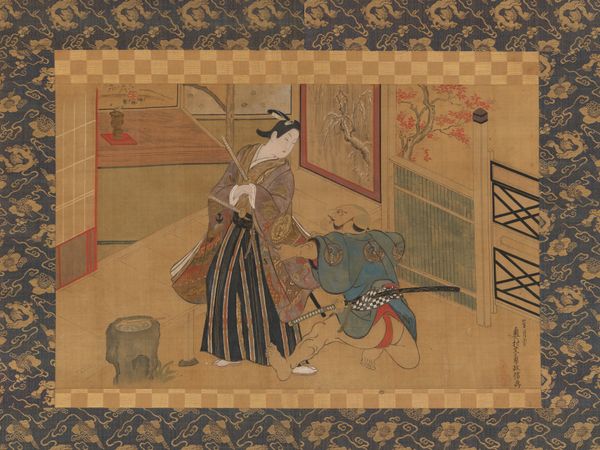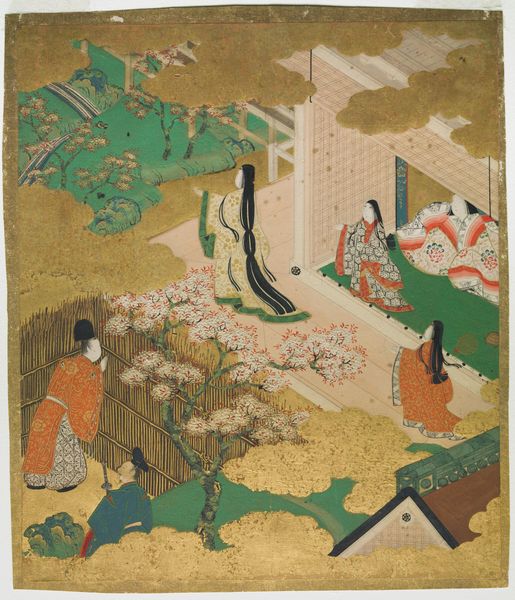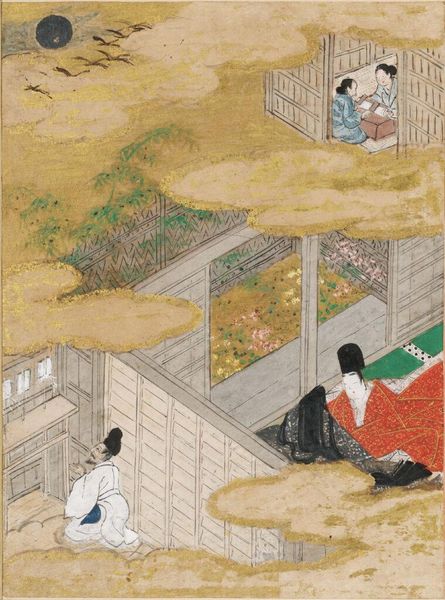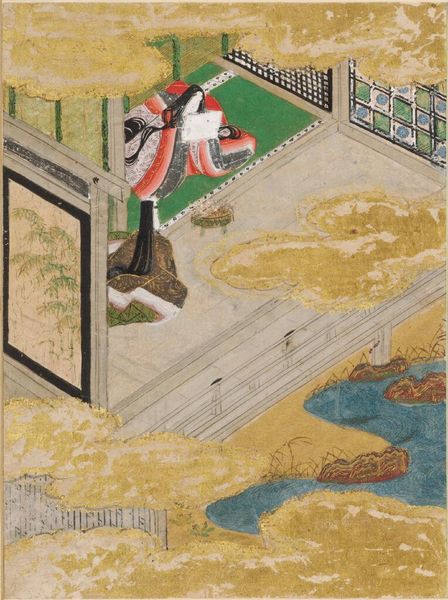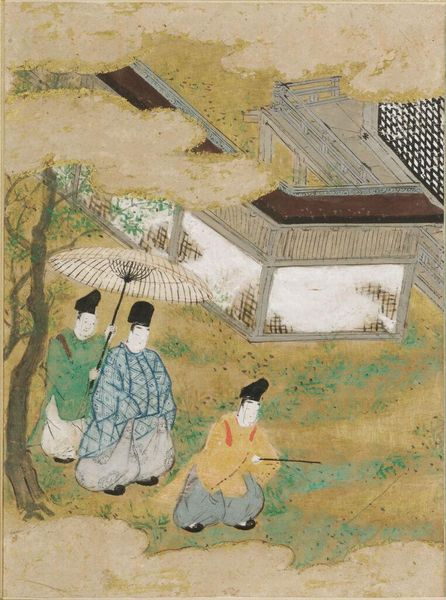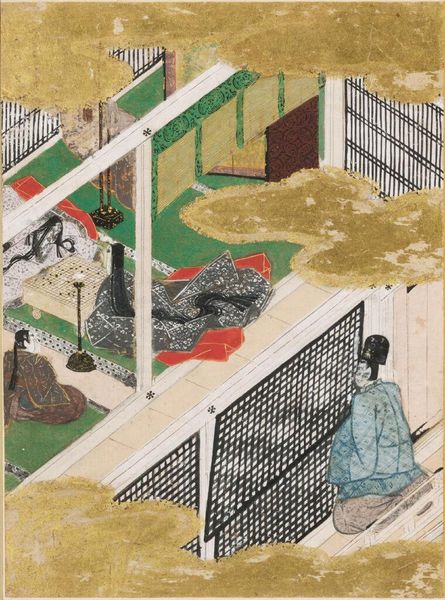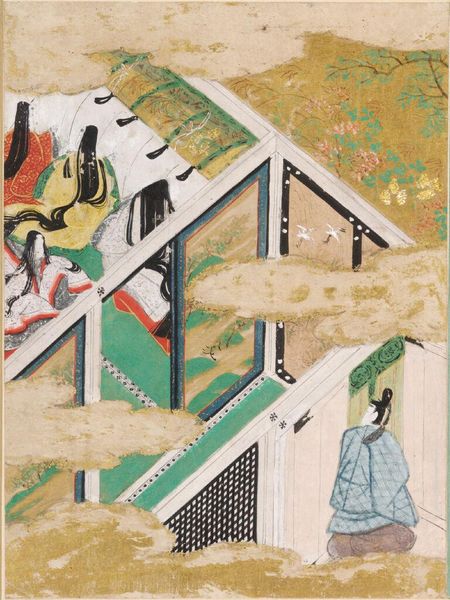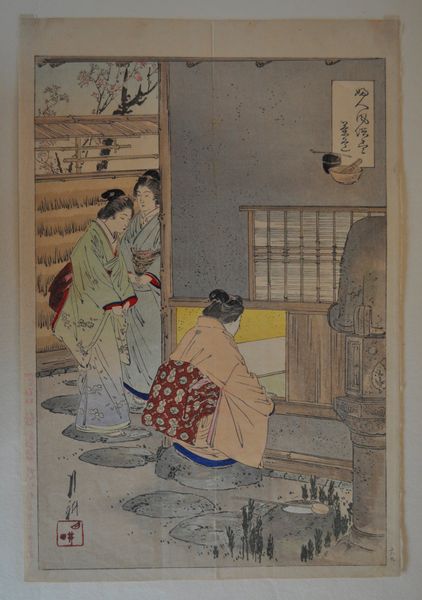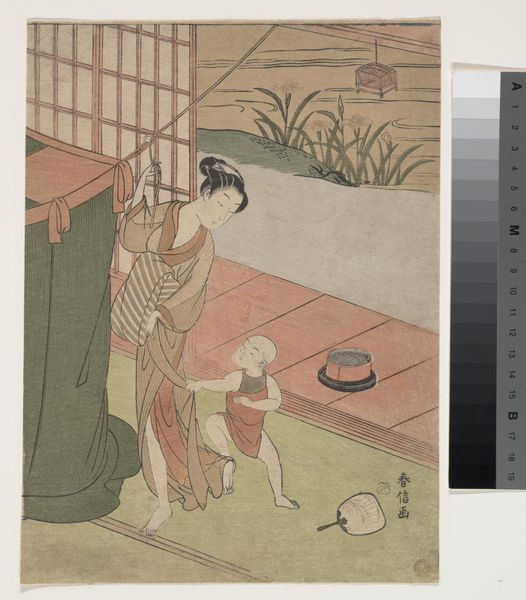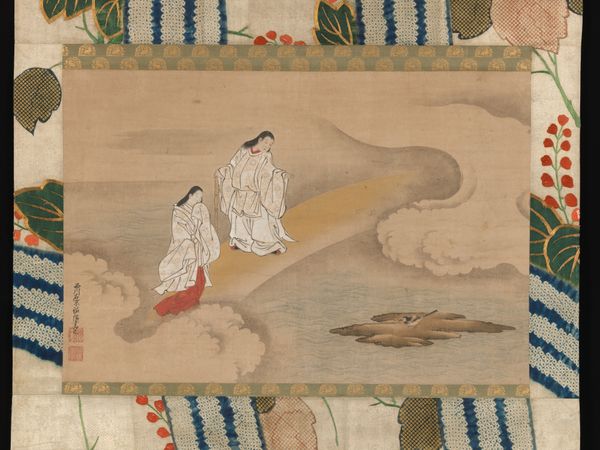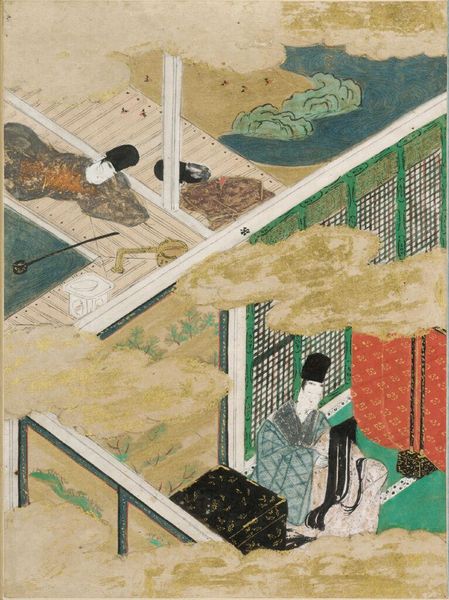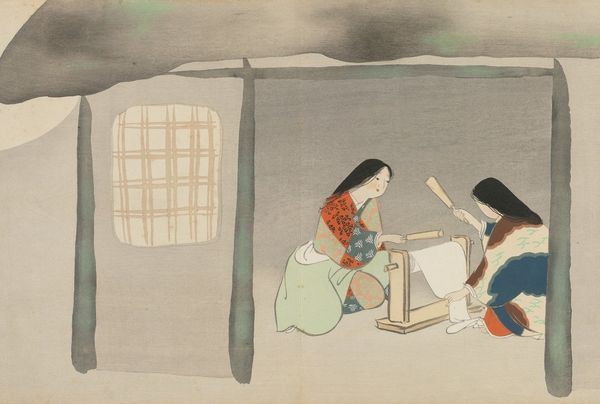
painting, watercolor, hanging-scroll, ink
#
portrait
#
water colours
#
painting
#
asian-art
#
ukiyo-e
#
figuration
#
watercolor
#
hanging-scroll
#
ink
#
miniature
#
watercolor
Dimensions: 38 × 15 3/16 in. (96.52 × 38.58 cm) (image)70 1/2 × 18 5/8 in. (179.07 × 47.31 cm) (mount)
Copyright: Public Domain
Sakai Hōitsu created "Woman of Takayasu" using ink and color on silk. The work's structure is immediately striking, employing a vertical format that divides the scene into distinct registers. The soft, muted palette evokes a tranquil, almost dreamlike atmosphere. Consider how Hōitsu uses spatial arrangement to construct meaning. The figures are carefully positioned within architectural frames, suggesting themes of observation and separation. The woman in white in the alcove and the figure in green are distanced by a grid. This creates a sense of barrier and voyeurism within the composition. The almost monochromatic background and sparse details draw attention to the structural elements of the setting. This focuses our interpretation on the psychological and social dynamics suggested by the arrangement of the figures within their environment. The artwork prompts us to reflect on the role of space in shaping human interactions.
Comments
minneapolisinstituteofart almost 2 years ago
⋮
This is a scene from the Tales of Ise (Ise monogatari), a collection of prose and poetry from the 10th century. As the story goes, a husband starts an affair with a woman from Takayasu. Since his wife does not appear jealous, he suspects that she has a lover, too, and one day he hides in the garden to observe her. When he sees her reciting a poem about her wish for him to return safely from his journey, the husband decides never to visit his mistress again. Some time later, on a trip to Takayasu, he visits the former mistress's house and, as depicted here, sees her in careless attire, with a rice ladle in her hands and an overflowing bowl of food. This sight disgusts him so much that he decides never to return to Takayasu again. Sakai Hōitsu was not only a painter but also a poet and a man of letters. He came from a high-level samurai family, but chose to enter the priesthood at 36 rather than follow a political career. After 1797, he devoted himself solely to the decorative Rinpa school with the aim of reviving the style of Ogata Kōrin, an artist who had worked for the Sakai family five generations earlier.
Join the conversation
Join millions of artists and users on Artera today and experience the ultimate creative platform.
